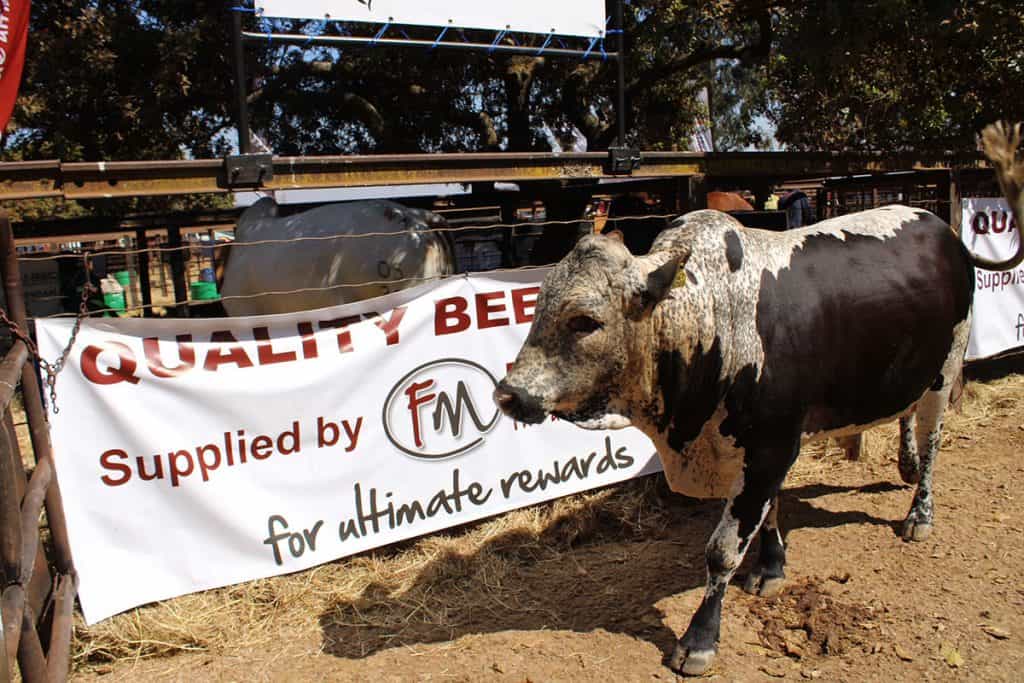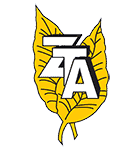National Sale : Showcase for finest cattle across breeds

The annual event that is the National Sale has come and gone. Without doubt, it is the cattle industry’s premier annual event and this year, the 55th sale did not disappoint. As per tradition, the auction began after a welcome by Zimbabwe Herd Book (ZHB) chairman, John Crawford.
A minute’s silence was held to remember one of the cattle sector’s most dedicated servants, Dr Jacobus Jackson who passed away earlier this year, at the age of 91. Fondly known as “Oom Japie,” he conducted 17 consecutive annual inspections prior to the National Sales, with the last one being only last year. Involving countrywide travel to numerous studs, with months on the road, meticulously inspecting every single potential entry for the National Sale, these inspections are an enormous feat of endurance. They are without doubt a huge part of his legacy and testament to his passion for the cattle of Zimbabwe. Frans Briers took up the reins this year, conducting inspections alongside Crawford.
The National Sale always attracts a large crowd of spectators and this year, it was no different. According to ticket sales at the gate, this drew an attendance of around 560 people (buyers, sellers and the general public) to watch. With winter slowly easing its hold on Zimbabwe, the day dawned clear and bright and remained warm and sunny for the duration of the sale. Colourful exhibitor banners and gazebos contributed to an agricultural show atmosphere. Inside the pen area, stud breeders networked with buyers and onlookers whilst cattle handlers groomed and brushed the cattle until their coats gleamed, making sure their charges looked their show best.
Bidding began with Dorper rams from two studs, Border Dorper and Northern Dorper. The cattle entries kicked off with 18 lots of Brahman heifers, offered by Ruvale Ranching, Luipaardsvlei Brahmans and Canterbury Brahmans. During the course of the day a total of 25 Brahman heifers sold. The DC Odendaal stud offered the first Brahman bull of the day and it fetched USD 6,000.
Although a number of lots remained unsold due to reserve prices not being met, demand for this breed remains firm. This year, the Erasmus family of Woodsgift Genetics reintroduced the Angus to the National Sale and their red bull fetched USD 4,000 under the hammer. Woodsgift’s Simmental bull sold for USD 4,750. It was the only Simmental bull sold on this year’s sale. The Nkone featured as a breed for the third consecutive year and although there was only the single bull from HAVE Nkone, he fetched USD 4,250. (See below Zimbbawe Herd Book Year of the Nkone 2023 for an independent opinion of the National Sales.)
The two Tuli bulls from Zimbo Tulis and Jambo Tulis represented the indigenous Sanga breed. They fetched USD 3,000 and USD 2,500 respectively.
The Boran breed was represented by Langton Boran Stud and HAVE Hook Borans. Lianne Herbst of LJ Simbra Stud in Karoi sold two Simbra bulls and two Simbra heifers.
Prices by breed
Angus: 1 sold, USD 4,000.
Beefmaster: 7 sold. Highest USD 8,000, lowest USD 3,500. Average USD 4,751.43.
Boran: 5 sold. Highest USD 4,250, lowest USD 2,500. Average USD 3,300.
Brahman: 35 sold. Highest USD 14,000, lowest USD 2,750. Average USD 5,250.
Brahman heifers: 25 sold. Highest USD 3,100, lowest USD 1,500. Average USD 1,932.
Nkone: 1 sold. USD 4,250.
Simmental: 1 sold. USD 4,750.
Simbra: 2 sold. USD 3,000 each.
Simbra heifers: 2 sold. USD 1,300 each.
Tuli: 2 sold. Highest USD 3,000, lowest USD 2,500. Average USD 2,750.
Zimbabwe Herd Book Year of the Nkone 2023
By Sekuru
National bull sale and efficient cattle
Friday 28 July, 2023 was an auspicious day for the Nkone Breed, Nkone Breeders and Nkone Believers in Zimbabwe. The occasion was the Zimbabwe Herd Book 55th National Breed Sale at CC Sales, Mount Hampden Saleyard.
Although many people are against polishing up their bull to show him off a bit at a sale like the National, I think it is a good thing and breeders and buyers can compare and discuss the bulls on offer – after all they are meant to represent the best genetics in Zimbabwe, and mostly they do. The competition is good for breeders. It does cost a lot to prepare and enter a bull but there is no doubt that a good showing at the National creates greater awareness of a breed and breeder and will increase on-farm and future sales.
We have had Nkone bulls on the National for three years now, after many years of no Nkone represented at all. Prices started very low the first year but have increased a little each year. To be honest, there has been lukewarm interest up to now and prices have been considerably lower than for the traditionally favourite breeds. Perhaps lower margins and higher costs are starting to make breeders realise the importance and profitable efficiency of having an indigenous component to their beef herd, particularly to exploit the unequalled breeding efficiency of the Nkone and other indigenous breeds.
My ambition is to get more communal and small-scale farmers in marginal areas to appreciate the value of improved indigenous cattle in their circumstances. Their adaptability, fertility and lower mortality can only improve the cattle production of these farmers, bettering their lives and that of the community as a whole. We are showing that this is a realistic assumption with our Gaza/Nguni Breeding Project in the Mahenye area of the Southeast Lowveld, probably one of the driest and hottest places in Zimbabwe. The better adapted small Gaza/Nguni cattle indigenous to the area are gradually gaining popularity again and are being accepted as more productive cattle with fewer problems than the large exotics and exotic crosses that had become popular due to their large (but inefficient) size. Indigenous Gaza/Nguni bulls which we are placing in the community on a village basis are outbreeding the previously favoured large exotics (favoured for their large size), simply because the smaller indigenous bulls are adapted and functional even during the hottest and driest times. The community are regaining their interest and love for their traditional Gaza/Nguni cattle which are so much part of their tradition and culture, having been brought here by their ancestors from Zululand, South of the Limpopo 200 years ago. The older ancestors of both these cattle and these people have been together for at least the last 8,000 years, originating in North Africa and then gradually migrating down to Southern Africa. It is good to see the people and their original cattle breed becoming united once again, forsaking unsuitable large exotic breeds which don’t belong in this extremely harsh environment and management system.
Back to the National, this year, a single Nkone entrant, Mark Hook’s 20-0002HHN, was sold at a very competitive and satisfying price and was right up there with the usual favourite breeds. Also, a realistic honest price in keeping with the value of the Nkone breed in the context of the Zimbabwean beef industry, at the showcase of the best specimens of every important Zimbabwean breed.
20-0002HHN was born and raised on sourveld grasses at Norton where the cattle are herded to grazing during the day and kraaled in small paddocks and guarded at night. His sire is 11-1167JFD bred by John Dudman at Figtree in Matabeleland and his Dam 15-5024ANG was bred by Ian Patullo of Anglesea in the Matopos, Matabeleland. 20-0002HHN is from original Tsholotsho bloodlines. It was a good day for us when we bought genetics from these two gentlemen when we founded our two herds 4 ½ years ago!
I personally think that the 2023 National Breed Sale which took place in the ZHB “Year of the Nkone,” is an important milestone and turning point for our Nkone breed and the future. I believe that the breed still has a long way to go and we have to keep persevering, breeding the best, and educating cattle producers on the Nkone’s efficient productivity and adaptation. But at last, I see an increasing positive interest and growing awareness of the value of our Nkone and other Indigenous Breeds in purebred and crossbreeding systems. My belief always has been that the real value of Indigenous breeds is as the maternal component of crossbreeding systems where they will have the most impact and which we will see become more widely accepted in time. We must be careful to keep breeding and selecting for Nkone females with the best overall maternal traits and not destroy their maternal functional efficiency by trying to change them into large traditional type beef cattle. That you can more closely achieve by using the Nkone female to breed crossbreeds from a terminal traditional beef bull if you wish to.
Remember, to have the maternal component of a crossbreeding system, one has to have a purebred herd to produce them! There will always be a demand for purebred females from a superior maternal breed like the Nkone, as there will be for Nkone bulls and bulls of the larger beef breeds too.
There will always be a place for purebreds of all breeds, otherwise there is no long-term continuity, whether in the production of Purebreds or Crossbreds. Future beef cattle will have to become more efficient to survive and supply the growing markets on less land area and reduced expensive artificial feeding. This means that breeders of our Nkone and other Indigenous breeds must continue to ensure that their valuable breeding efficiency on low-cost natural grazing is maintained or even improved to take advantage of this. There is no compromise.
It will certainly happen and perhaps the past has been too easy and profitable, allowing breeders to keep less efficient cattle and get away with it. Those days are on the way out and breeders will have to keep only the most efficient breeds or crossbreeds to survive in a changing and changed beef industry and economy.
We look forward to the near future when we have reached optimum numbers and have purebred heifers for sale to complement our purebred bulls and will possibly also produce Nkone crossbreds to suit other markets and preferences.
Now that the hype and applause of the 55th National Breed Sale is over, we all know that the Nkone Society and breed is still very small and very new since it was resurrected a few years ago. Every Nkone breeder needs to prove in their own herds what the Nkone breed can do, and the data must be made public. Only the best breeding cattle should be sold and high standards maintained. The Nkone Society and Zimbabwe Herd Book must ensure this. We must not slip into complacency because we achieved a competitive price for one bull on one sale. We know that we have the very best adapted, and efficient maternal genetics in our Nkone. They will make their mark as a valuable part of the future beef industry in Zimbabwe, in all sectors from communal to small- to large-scale. But, we have a long way to go and must continue to work tirelessly to that end. Our own herds and results are our shop window for the future.
“NKONE, THE ORIGINAL ALPHA MOTHER COW”
